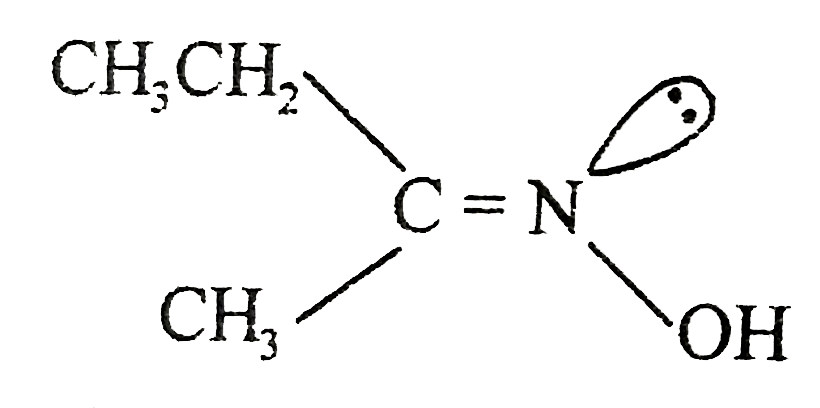CH3−C≡NH2O/Δ−−−−→(A)H2O/H+−−−−−→(B)(A)and(B) respectively are
CH3−O∣∣C−NH2andCH3COOH
CH3COONH4andCH3COOH
CH3CONH2andCH3COONH4
CH3−CH=NHandCH3COOH
The correct Answer is:A
To solve the question, we need to analyze the reactions of CH₃CN (acetonitrile) with water (H₂O) under different conditions.
1. Identify the Reactant:
The starting compound is CH₃CN, which is acetonitrile.
2. Partial Hydrolysis of CH₃CN:
When CH₃CN reacts with water (H₂O) under mild conditions (without strong acid or base), it undergoes partial hydrolysis. This means it is converted into an amide.
- The reaction can be represented as:
CH3CN+H2O→CH3C(O)NH2(Amide)
- The product formed (A) is acetamide (CH₃C(O)NH₂).
3. Complete Hydrolysis of Acetamide:
Next, when acetamide (A) undergoes hydrolysis in the presence of an acid (H⁺), it is completely hydrolyzed to form a carboxylic acid and ammonia.
- The reaction can be represented as:
CH3C(O)NH2+H2OH+−−→CH3COOH+NH3
- The product formed (B) is acetic acid (CH₃COOH).
4. Final Products:
- Therefore, the structures of A and B are:
- A: Acetamide (CH₃C(O)NH₂)
- B: Acetic Acid (CH₃COOH)
Conclusion:
The final answer is:
- (A) Acetamide (CH₃C(O)NH₂)
- (B) Acetic Acid (CH₃COOH)
The starting compound is CH₃CN, which is acetonitrile.
When CH₃CN reacts with water (H₂O) under mild conditions (without strong acid or base), it undergoes partial hydrolysis. This means it is converted into an amide.
- The reaction can be represented as:
CH3CN+H2O→CH3C(O)NH2(Amide)
- The product formed (A) is acetamide (CH₃C(O)NH₂).
Next, when acetamide (A) undergoes hydrolysis in the presence of an acid (H⁺), it is completely hydrolyzed to form a carboxylic acid and ammonia.
- The reaction can be represented as:
CH3C(O)NH2+H2OH+−−→CH3COOH+NH3
- The product formed (B) is acetic acid (CH₃COOH).
- Therefore, the structures of A and B are:
- A: Acetamide (CH₃C(O)NH₂)
- B: Acetic Acid (CH₃COOH)
The final answer is:
- (A) Acetamide (CH₃C(O)NH₂)
- (B) Acetic Acid (CH₃COOH)
Topper's Solved these Questions
Similar Questions
Knowledge Check
In the reaction sequence
C6H5CHONH2OH/H⊕−−−−−−−−→Δ(X)P2O5/Δ−−−−−→(Y)H2∅H⊕−−−−→(Z)
(X), (Y) and (Z) respectively beAC6H5CH=N−OH,C6H5CN,C6H5COOHBC6H5CH=NOH,C6H5CONH2,C6H5CONH2CC6H5−CH=NOH,C6H5COOH,C6H5CONH2DC6H5−CH=NOH,C6H5COOH,C6H5CNIn the reaction sequence :
C6H5CHONH2OH/H+−−−−−−−−−−→Δ[X]P2O3/Δ−−−−−−−−→(Beckmann)[Y]H2O/H+−−−−−→[Z]
[X], [Y] and [Z] respectively be :AC6H5CH=N−OH,C6H5CN,C6H5COOHBC6H5CH=NOH,C6H5CONH2,C6H5COOHCC6H5−CH=NOH,C6H5COOH,C6H5CONH2DC6H5−CH=NOH,C6H5COOH,C6H5CNIn the given reaction sequence
C6H5CHOH2N−OH−−−−−−→H⊕,ΔAP2O5−−→B
A and B respectively are:AC6H5−CH=N−OH,C6H5CNBC6H5−CH=N−OH,C6H5O∣∣C−NH2CC6H5−CH=N−OH,C6H5CHODC6H5−CH=N−OH,C6H5−COOH
C4H6H2+Pt−−−−→1molC4H8O3/H2O−−−−→ Acedic acid
(A) and (B), respectively, are:
View SolutionIn the reaction sequence CH3CHONH2OH/⊕H−−−−−−−→(A)P2O5/Δ−−−−−→(B), B will be
View SolutionConsider the following reaction ,
C6H5NH2+CHCl3+KOHΔ−−→(A)H+/H2O−−−−−→(B)+(C)
The compounds (B) and (C) are :-
View SolutionCH3COOHLiAlH4−−−→A
A+CH3COOHH3O+−−−→B+H2O
In the above reaction 'A' and B respectively are
View SolutionThe product D of the reaction CH3ClKCN−−→(A)H2O−−→(B)NH3−−→(C)Δ−−→(D) is
View Solution

